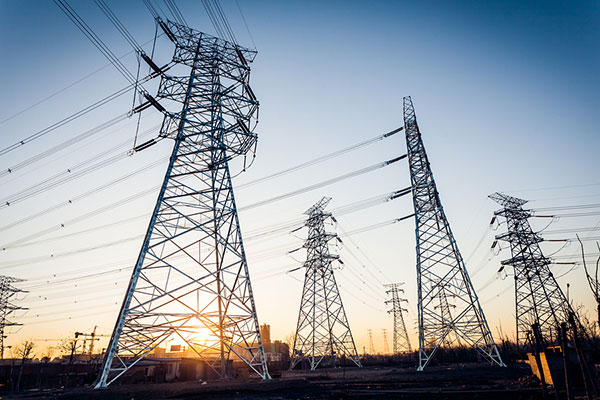

Өндөр хүчдэл дамжуулах кабелийг хүчээр дамжуулах кабель нь тэдний хүч дамжуулах болон үүрэг гүйцэтгэснээс хамааран хэд хэдэн хэлбэрээр зохион бүтээгдэнэ.
Их Британид Шетландын өндөр хүчдэлийн цахилгаан дамжуулах шугам холбох төслийг амжилттай холбосноор томоохон амжилтад хүрсэн. 320 KV Өндөр хүчдэлийн дамжуулалтын кабель нь NKT, хоёр компаниуд, Шотланд ба өмнөд энерги (Ssen дамжуулалт).
Дараахь нь танилцуулга юм Өндөр хүчдэл дамжуулах кабель.
Кабелиуд нь ерөнхийдөө зажигтай байдаг, хөнгөн цагаан, одоо хөнгөн цагаан хайлш. Гэхдээ гадаа хэт их барьдаг нь ерөнхийдөө ган цөмийн голд, жишээ нь өндөр хүчдэл дамжуулах кабель гэх мэт.
Өндөр хүчдэлийн шугам нь ихэвчлэн 10кв-ийн хүчдэлийг агуулдаг дамжуулах шугамыг хэлдэг (үүнд 10кв орно) болон түүнээс дээш.
Хотын өндөр хүчдэлийн дамжуулалт нь кабелийг ингэснээр кабелийг тусгаарлагчаар дамжуулдаг, Талбарт ихэвчлэн цамхаг барьсан шугамын шугамыг ашигладаг.
Одоо илүү их, илүү том дамжуулах шугамуудыг барьсан тул, Хөндлөн улс эсвэл хөндлөн далайд, зай маш хол байна.
Өндөр хүчдэлийн кабелийн өндөр хүчдэл, Энэ нь ихэвчлэн холын дамжуулалтад ихэвчлэн ашиглагддаг.
Хэрвээ метрэнийн карюм ашигласан, ялангуяа нарийн төвөгтэй газар нутгаар дамжуулж байдаг, Зардал, техникийн шаардлагаас гулгах болно.
Нөгөө талаар, Агаар дахь агаарт агаарт сайн дулаан ялгаруулна, Газар доорх кабелийн эргэн тойронд агаар урсахгүй, дулааныг тараахад хэцүү байдаг, аль нь газар доорхи кабелиар дамжуулж болох хүчийг хязгаарладаг.
Тиймээс өндөр хүчдэлийн дамжуулах кабелийг бүтээх нь энэ LAN арлуудын кабелийн холболтын төсөлд тохирох болно.
Subsea кабелийн дараагийн хэсэг нь тавигдсан, Энэ кабель татах нь Шетландын анхны холболтын анхны холболтын чухал үе юм, арлын цэвэр аюулгүй байдлыг хангахад туслах, Тууна. нүүрстөрөгчийн цахилгаан үйлчилгээ.
Кабелийн чиглэл нь холбогдох болно 600 цэвэр цэвэрлэгч, сэргээгдэх эрчим хүчний үе.
Нь бас багтсан болно 457 М Viking Energy Sall Sall Farm, which when completed will be the most productive onshore wind farm in the UK – supporting the UK and Scotland’s net-zero emissions and energy security goals.
Оффшор ба Салхины хүч чадал нь эрчим хүчний хөгжил, эрчим хүчний хөгжил, тогтвортой эрчим хүчний хувьд дэлхийн сонирхдог салхины зах зээл дээр маш сайн мэддэг.
Газар дээр эдийн засгийн газрын ашигт малтмалын нөөцийн нөөц буурч байна, Газар нутгаас салхин цахилгаан станцын салбарыг дэлхийн хэмжээнд байлдааны чиглэлээр явуулсан.
Оффшорын салхин хүч нь дэлхийн салхины хүч чадлын хамгийн сүүлийн үеийн фронт юм, Эрчим хүчний үеийн ашиглалтын цаг, газрын ажил мэргэжил дутмаг, том хэмжээний хөгжлийн хувьд тохиромжтой.
Салхины салхин цахилгаан станцууд цахилгаан эрчим хүчийг олж авахын тулд газрын салхинд хийсэх бүрэн хэрэгслийг ашигладаг, ихэвчлэн зарим агааржуулалттай энгийн хэсэгт байдаг.
Ofshore салхины хүчтэй харьцуулахад, Оффшорын салхины эрчим хүчний эрчим хүчний эрчим хүчний үр ашиг 20% руу 40% ovshore-ийн салхин цахилгаан станцаас өндөр, мөн газрын ажил мэргэжилгүй давуу талтай байдаг, өндөр эр салхины хурд, бага элс, тоос, ах хөгжил, асрах ажиллагаа, тэг тоос ялгаруулах.
Энэ нь мөн нэгж, нулимсыг бууруулж, салхин турбины үйлчилгээний амьдралыг багасгаж болно, тэдгээрийг том хэмжээний хөгжилд тохируулах.
Гэсэн хэдий ч, Оффшорын салхины сценарийн хязгаарлалтын улмаас, Салхины салхины хүч нь бас олон оронд эрчим хүч дамжуулах чадвартай арга байсан.
“The installation of subsea cable systems is complex and requires a great deal of planning to achieve this, болон NKT нь найдвартай үйл явцыг найдвартай гүйцэтгэх боломжийг олгохын тулд Subjea кабелийн мэргэжилтнүүдээр ажилласан, аюулгүй, ба хамгийн өндөр стандартад нийцсэн. Энэхүү хоёр дахь кабелийн кампанит ажил нь SSEN дамжуулалтыг дамжуулж, энэ төслөөс дамжуулан гүйцэтгэгч компаниудыг урагшлахад сэтгэл хөдлөм алхамыг тэмдэглэв, Ирэх долоо хоногт Subsea кабелийн кампанит ажлын энэ үе шатыг дуусгахыг тэсэн ядан хүлээж байна,” SSEN Transmission.
Дээр дурдсанчлан, шумбагч онгоцны кабелийг маш хялбар, хурдан байдаг, Энэ суулгацын технологийг эзэмшсэн дэлхийн өнцөг булан бүрт байгаа дэлхийн цөөн хэдэн улсууд одоо хүртэл байгаа юм?
Учир нь шумбагчийн кабель энгийн харагдаж байна, Гэхдээ үнэндээ, Түүний суурилуулах үйл явц маш нарийн төвөгтэй байдаг, дараа нь засвар үйлчилгээ, урьдчилан сэргийлэх талаар дурьдахгүй байх.
Шумбагч кабель тавих нь голчлон кабель чиглүүлэлтийн судалгаа, цэвэрлэгээ орно, шумбагчийн кабелийн кабель хэвтэж, гурван үе шатанд оршдог.
Кабелийн хэв маяг нь кабелийн өнцгийг ус руу чиглүүлэх, кабелийн хурд, кабелийн сулрал,.
Тэдний дунд, Гүехэн хэсэгт хэвтэх үед, Кабелийн хэвтэж буй хөлөг онгоцыг газар дээр зогсоох хэрэгтэй 4.5 ХӨДӨЛМӨРИЙН КС-ийн КС-ийн кабелийг эрэг дээрх трактор дээр байрлуулсан кабелийг боов хийжээ.
Кабелийг ofshore-ийн дараа кабелийг арилгасны дараа кабель нь ёроолд живнэ.
Далайн гүн хэсгийг хэвтэх үед, кабелийн хэвтэж буй хөлөг онгоц нь кабелийг гаргаж, гадагш чиглүүлж, усан доорх хурд, усан доор байрлах,.
МАШИНЫ НЭГДСЭН НЭГДСЭН ШИЛДЭГ ДЭЛГҮҮРИЙН ТУХАЙ ХАМГИЙН ЖИЛИЙН КАППАГДАГДСАН.
Шилжилтийн хамтарсан буланд баталгаатай, Оффшорын кабелийн урьд өмнө суулгасан өндөр хүчдэлтэй DC газрын кабель, дараа нь SSEN дамжуулалтын кабель, дараа нь SSEN дамжуулалтын Coports Condertter Stations ба AC-ийн станц руу холбогдоно.
Энэ бол Lang Islans-д кабелийн нэвтрэх үндсэн үйл явц юм.
Claes Westerlind, Гүйцэтгэх захирагч ба NKT-ийн өндөр хүчдэлийн ургамлын дарга, л хэлсэн, “We are very pleased that we continue to work well with SSEN Transmission, leveraging our extensive experience in HVDC technology to provide a low carbon electricity supply to the Shetland Islands.” Karlskrona, Швед.
Shetland HVDC холбоосын төслийг зунаар дуусгах төлөвтэй байна 2024.
Хүмүүс эрдэс бодисыг тусгаарлагдсан кабелийг сонсох үед, many immediately think of harsh environments like…
Харилцаа холбоо, цахилгаан дамжуулах системүүд хурдан ургадаг, the demand for reliable and cost-effective…
Том хэмжээний тос, хийн төслүүдэд, Аж үйлдвэрийн кабель нь зөвхөн дагалдах хэрэгсэл биш юм—they are the "nervous…
Цахилгаан холболтын ертөнцөд, кабелийн залгуур—кабелийн чих эсвэл кабелийн терминал гэж нэрлэдэг—байна…
Цахилгааны инженерийн төсөлд зөв резинэн кабель сонгохдоо, it is critical to…
Эрхэм хүндэт түншүүд, үйлчлүүлэгчид: 1-р сарын 29-ний өдөр, 2025 Хятадын Цагаан сарын баяр – Spring…